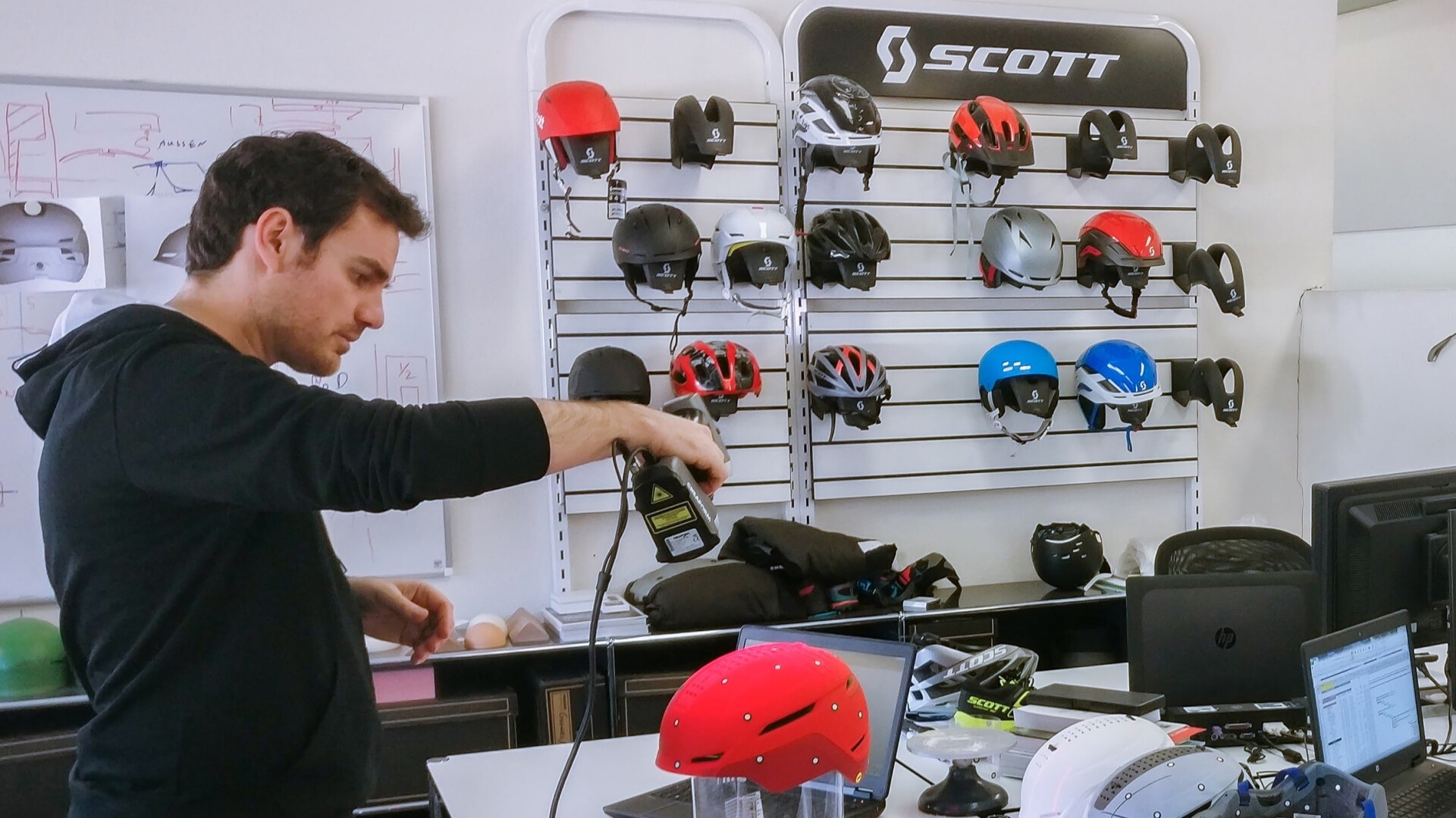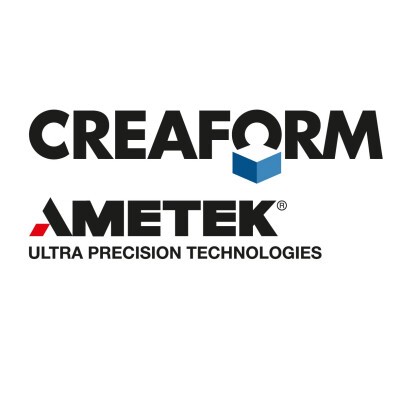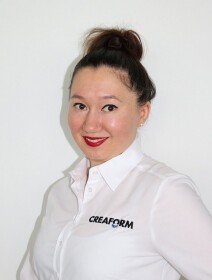SCOTT Sports: Competitive advantage through 3D measurements
“While developing our products could be possible without the HandySCAN 3D, we’ve gained so much time, accuracy, flexibility, and efficiency since using the solution throughout the product design and engineering phase.” — Bertrand Didier, SCOTT Sports.
Known for its wide and complete range of quality sports gear, SCOTT Sports has a bit of a peculiar history: the company was founded in Idaho in the north-western USA, back in 1958. It first came to the market with ski poles, followed by goggles, then slowly branching out into biking in the 1980s.
In 1998 came an unusual twist: the company was acquired by what was then its European sales and distribution office, effectively moving the headquarters in Givisiez, a picturesque small town near Fribourg. Moving the headquarters to Switzerland seemed to give a second wind to the company, which greatly expanded its product line from then on. Nowadays, SCOTT Sports develops and produces head-to-toe gear for skiing, biking, motorcrossing, snowmobile riding and trail running. The common thread: All these sports are suited to a mountain, outdoorsy environment.
A Passion for Pushing the Limits
In the highly competitive sports gear market, what sets SCOTT Sports apart? According to Bertrand Didier, Chief Engineer for the company’s Sports Division, it’s first and foremost an intense drive to innovate and constantly push the limits of its products.
The company’s tagline is “No Shortcuts” -and it is nothing less than a motto that permeates the whole design and development process. In order to create gear that is perfectly suited to the sport and truly corresponds to its practice, they must constantly rethink all the most important aspects: security and protection, ergonomics, reliability and, of course, style!
While SCOTT Sports likes to continue playing on and drawing upon its American heritage, it is now a Swiss based company, with all the efficiency and precision that this implies. In Givisiez, there are currently over 20 engineers working for the various sport divisions.
Every new product development stems from a collaboration between three teams: Product Managers, Designers, and Engineers. The latter becomes more and more involved during the project lifecycle, as the technical aspects gradually takes center stage.
The Need for 3D Scanning Technology
Bertrand first saw a live demo of Creaform products at an industry show and admits that he was astonished by the technology. Especially by the fact that it “seemed so simple to use while still being very accurate”.
At first, SCOTT Sports weren’t sure if their engineering division actually needed a 3D scanner of their own. They had partnered with external services in the past, but could an in-house device really be useful and a sound investment?
So, the company initially decided to make a minimal investment in a “nearly homemade” mini 3D scanner, just as some sort of proof test. After a while, it became clear that:
- SCOTT Sports could definitely use 3D scanning technology and;
- their mini-scanner was not up-to-part.
For Bertrand and his team, the HandySCAN 3D was the right choice because it was “so much more intuitive, quick, and comfortable to use” than their “test” scanner. Furthermore, they were impressed by its resolution and ability to work on any surface or color while they appreciated that Creaform software was powerful yet simple to use. It made post-scanning work with meshes a cinch.
A Competitive Edge
When asked if the HandySCAN 3D brought SCOTT Sports a competitive edge, Bertrand responded with a resounding affirmative. The whole team uses it and has quickly integrated it into their workflow. “We like that it’s right there, so easy to take out of its box to operate. Its availability means we never have to hesitate to measure something, even to obtain a reference or make measurement comparisons” between prototypes, for instance.
Case in point: Using Creaform technology when developing the recently launched Symbol 2 ski helmet, “was useful for the flexibility and speed it brought us in the design phase, the comparison between different versions, as well as the product control at the end of the development lifecycle. All of this led us to deliver a great product on time, with the shape and fit that everybody expected.”
Bertrand estimates that using the HandySCAN 3D saved SCOTT Sports “at least a few weeks” of trial and errors, including the designers and engineers’ salaries as well as a few prototypes (which generally cost between 700 and 1,000 euros each).
Since a helmet is a very complex object, one that presents particular challenges in terms of both volumes and ergonomics, it simply wouldn’t have been possible to “go as far” while designing the product without a 3D scanner. This type of product features both safety and comfort (pressure points) issues that could prevent it from reaching a perfect fit. But the TRUsimplicity of the HandySCAN 3D rose up to the challenge with its user-friendliness and versatility, contributing to the Symbol 2 success (the helmet won the gold award at the ISPO Award in 2017).
On top of using it in its development process, SCOTT Sports utilizes their Creaform 3D scanner for reverse engineering, dimensional control as well as to obtain renderings of all their products to keep on file and to provide 3D models to the manufacturers they work with.
Geared toward the future
What are the next steps for SCOTT Sports? 3D technologies such as scanning and printing have opened up new possibilities for the dynamic company. Armed with an extensive industry knowledge — very few companies offer such a broad product line, which enables them to easily transfer knowledge and features from one sport or one equipment piece to another — Didier and his team want to continue improving the products and constantly make them safer, more comfortable, more versed in aerodynamics, etc.
Furthermore, they are not afraid to question their own processes and challenge themselves, willing to change direction quickly if need be, all in the name of perfection. Focusing on the details and transitioning the products into a technology realm are two upcoming challenges for SCOTT, and for sure “no shortcuts” will be taken. And they can rely on the HandySCAN 3D to help them achieve their goals!


